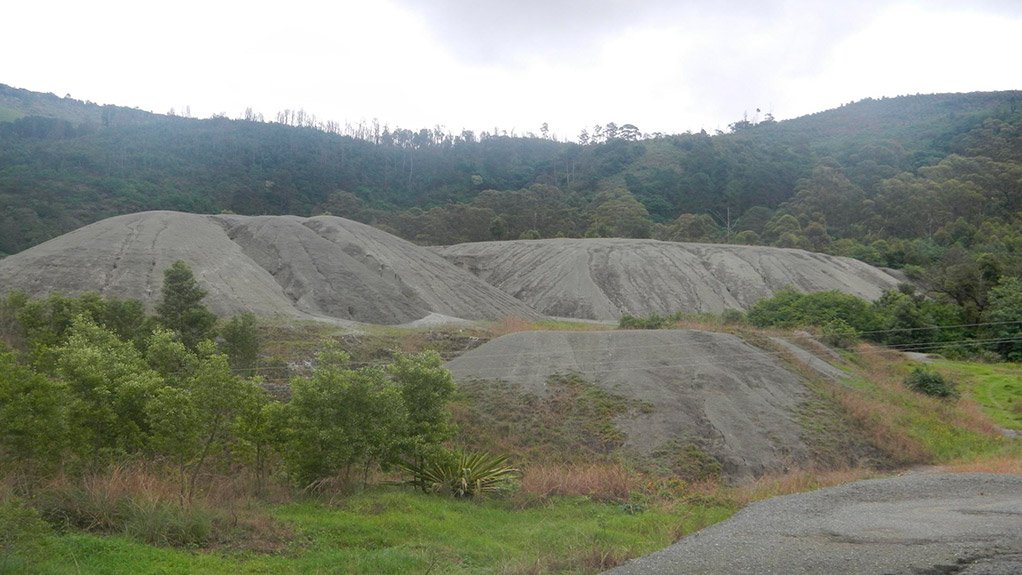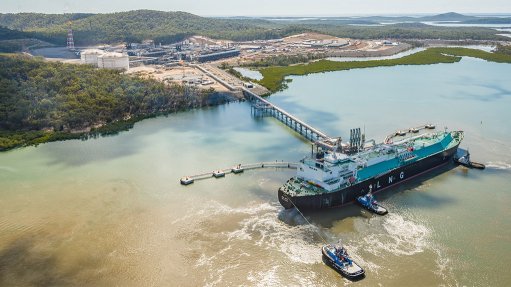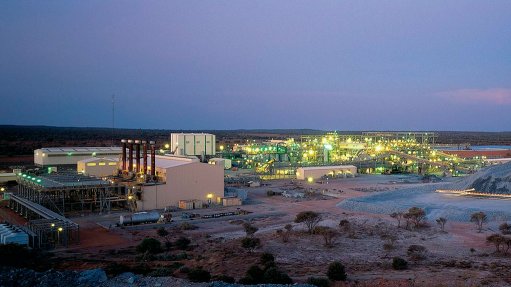Unrehabilitated Mpumalanga asbestos mine tailings a possible health hazard – scientist


ASBESTOS MINE DUMP, MPUMALANGA Despite the cessation of asbestos mining, there is still a concern about possible environmental pollution by asbestos fibres
Asbestos mining was banned in South Africa because of the health effects linked to the inhalation of asbestos dust fibres. However, asbestos mine tailings in Mpumalanga have not been rehabilitated and dust fibres could easily be lifted and transported by the wind and then settle in sensitive areas, such as local communities, says Council for Geoscience (CGS) scientist Maphuti Kwata.
South Africa enacted legislation in 2008 banning the use of asbestos in all sectors, which came after the last asbestos mine was closed in 2001.
Kwata points out that, despite the cessation of asbestos mining, there are still concerns about possible environmental pollution by asbestos fibres. She says that this is why the CGS recently undertook a study to determine the dust fall rates and the state of asbestos pollution in the study areas.
The five sampling sites in local communities around Mbombela, Malelane and Badplaas are close to the asbestos mine dumps. These were studied in the period from October 2015 to April 2016.
Kwata comments that samples collected for dust fall rate investigations were collected using the American Standard Test Method D1739 of 1970 and the South African National Standards method 1929 of 2005.
She elaborates that these methods require particle sizes with diameters less than 100 μm. After filtration, dust fall rates were determined by using the gravimetric method. Surface dust samples were collected using a clean brush and dust pan, a medium-sized ziplock plastic holder bag and sticky tape.
Kwata says that dust particles were stored in clean, clearly labelled sample containers. Trapped dust material was collected around window panes in houses, from the surfaces of furniture and on the windscreens of old cars.
“Surface and trapped dust samples were prepared in the laboratory before being subjected to analyses by scanning electron microscope-energy dispersive spectrometry, X-ray fluorescence and X-ray diffraction,” she adds.
Kwata notes that dust fall rates were all below the residential limit for total dust fallout of local and international standards set at 600 mg/m2 a day.
She states that the dominant minerals detected included serpentine, amphibole, quartz, chlorite, plagioclase, calcite, talc, pyroxene, dolomite, mica, feldspar, clay, iron oxide, smectite and goethite-hematite in outdoor and indoor dust samples alike.
Industrial materials such as fly ash particles, glass fibre and biological materials, such as organic fibre, were also detected.
“While the amounts detected were at trace levels, the continued presence of these asbestos minerals around residential areas remains a cause for concern. Asbestos pollution in Mpumalanga continues to pose a health hazard to the people living in affected residential areas,” Kwata concludes.
Comments
Press Office
Announcements
What's On
Subscribe to improve your user experience...
Option 1 (equivalent of R125 a month):
Receive a weekly copy of Creamer Media's Engineering News & Mining Weekly magazine
(print copy for those in South Africa and e-magazine for those outside of South Africa)
Receive daily email newsletters
Access to full search results
Access archive of magazine back copies
Access to Projects in Progress
Access to ONE Research Report of your choice in PDF format
Option 2 (equivalent of R375 a month):
All benefits from Option 1
PLUS
Access to Creamer Media's Research Channel Africa for ALL Research Reports, in PDF format, on various industrial and mining sectors
including Electricity; Water; Energy Transition; Hydrogen; Roads, Rail and Ports; Coal; Gold; Platinum; Battery Metals; etc.
Already a subscriber?
Forgotten your password?
Receive weekly copy of Creamer Media's Engineering News & Mining Weekly magazine (print copy for those in South Africa and e-magazine for those outside of South Africa)
➕
Recieve daily email newsletters
➕
Access to full search results
➕
Access archive of magazine back copies
➕
Access to Projects in Progress
➕
Access to ONE Research Report of your choice in PDF format
RESEARCH CHANNEL AFRICA
R4500 (equivalent of R375 a month)
SUBSCRIBEAll benefits from Option 1
➕
Access to Creamer Media's Research Channel Africa for ALL Research Reports on various industrial and mining sectors, in PDF format, including on:
Electricity
➕
Water
➕
Energy Transition
➕
Hydrogen
➕
Roads, Rail and Ports
➕
Coal
➕
Gold
➕
Platinum
➕
Battery Metals
➕
etc.
Receive all benefits from Option 1 or Option 2 delivered to numerous people at your company
➕
Multiple User names and Passwords for simultaneous log-ins
➕
Intranet integration access to all in your organisation



















